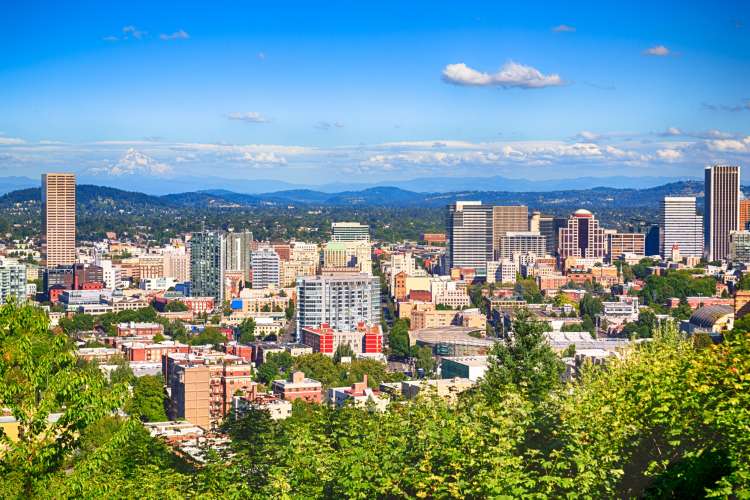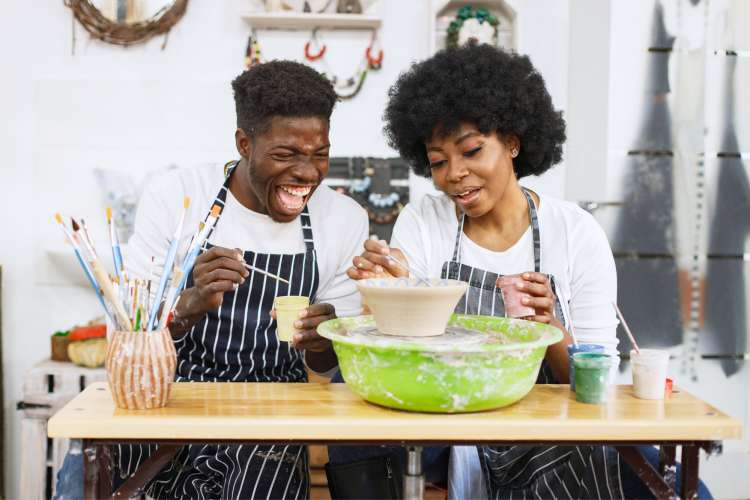Pottery Classes in Portland
Discover pottery classes with top-rated instructors in Portland
Give in to your creative side with pottery classes in Portland. You'll join world-class artists and potters who will share expert tips and authentic techniques for creating a variety of pottery. Learn how to hand-form, slipcast or wheel-throw clay into unique pieces. Whether you design a mug, a vase, a sculpture or a plate, you'll have a fun experience and maybe pick up a new hobby. Check out a wide array of pottery classes today!

NEED HELP PLANNING?
Best Pottery Classes in Portland
Get ready to learn new skills by joining a talented and informative potter for pottery classes in Portland. You’ll be able to spend quality time with friends, family or co-workers as you take on a new hobby. These pottery classes are a wonderful idea for date nights, girls’ nights out and gifts for artistic friends.
The Pacific Northwest locale of Portland offers a landscape full of imagination and creative spirit. Gain inspiration and ideas by visiting sites like the Portland Art Museum, the Oregon Maritime Museum or the Portland Japanese Garden. Inspiration is also likely to come from the tides, creatures, plants and habitats of the Pacific Ocean, the Columbia River and the nearby Tillamook State Forest.
Beginners interested in learning new techniques, or experienced potters looking for new inspiration, will enjoy pottery classes in Portland as a way to boost their artistic abilities. You’re sure to find fun and interactive sessions to inspire the creative spirit.

What is Pottery?
Pottery is a term that refers to a vessel that holds something, such as vases, mugs, pencil holders and salad bowls. Classes in Portland provide the chance to make fun items like pet dishes, sculptures, flower vases and decorative planters.
Difference Between Pottery and Ceramics
Pottery and ceramics are two words that can seem interchangeable and cause creative confusion. While similar in nature, there are a couple of differences.
Ceramics refers to the overall artistic medium of working with clay while pottery is a category within the genre. Any object made from non-metal materials, which can include clay, earthenware, porcelain or stoneware, is a ceramic. Sculptures are included in this category.
Pottery refers to a type of ceramic that holds something, like a vase, a bowl or a coffee mug.
Benefits of Attending Pottery Classes in Portland
- Relieve stress
- Learn a new hobby
- Connect with new people
- Boost current pottery skills and artistic techniques
- Increase happiness by spending time with friends and family
- Make pottery items for your home or to give as gifts

Pottery Creation Techniques
When taking pottery and ceramics classes in Portland, you’ll join experienced artists who share their skills and expertise as they teach a wide variety of techniques to shape, build and glaze a unique work of art.
Pottery techniques include the well-known wheel throwing as well as hand building, slab and coil, pinching and slip casting.
Wheel Throwing
Wheel throwing is when a potter uses a traditional potter’s wheel to spin the clay into shapes. The potter uses their hands to shape the wet clay into a shape as the wheel spins. Decorative accents can also be added by using the potter’s wheel.
Hand Building
Just as it sounds, hand building is when the artist forms a shape “freehand.” A pottery wheel can be used with this process, as it can help with the shaping process.
Slab and Coil
In slab and coil pottery, the artist rolls out long coils of clay and folds and forms them into a shape.
Pinching
Pinching is one of the most basic pottery techniques. The clay is “pinched” to form a shape. It starts out as a ball and eventually becomes a plate with a “lip” or a small pot.
Slip Casting
Slip casting is when the clay is mixed with water. This forms a runny “paste” that’s also known as liquid clay. A mold is used to form a shape. This is how 18th-century porcelain figurines were typically made.
Glazing
One of the most fun parts in pottery, glazing is the glossy coating, or paint, that’s used on pottery to give it life, color and definition. Glazing seals the clay, making it waterproof and durable.

Firing
Firing happens twice during pottery creation. Going by two names, bisque firing and glaze firing, this is when the pottery is placed in a kiln and allowed to sit at a high temperature. This hardens and “sets” the clay. Bisque firing sits in the kiln for eight to 10 hours, and glaze firing sits for about 12 hours.
Bisque firing is performed after the clay is shaped the first time (before it’s glazed). The clay must be completely dry before placing it in the kiln. This process makes it “glasslike.” When done, it’s known as bisqueware. This is when the artist paints, or glazes, the pottery. After glazing, the pottery is again placed in the kiln for glaze firing. This finishes off the project.
How long does it take to learn pottery?
Creating objects out of clay is a fun hobby that can be enjoyed with friends and family. While it’s not hard to learn, it does take time, practice and patience. You’ll probably start with a basic technique such as a pinch pot and work your way up to more detailed pieces.
How much is a ceramics or pottery class?
Pottery and ceramics classes in Portland can run the range from anywhere between $70 to $100 in price, depending on the time frame and what you’re making. Experienced artists and potters lead fun and interactive pottery classes in Portland that last for about two hours.
Other Classes in Portland




Discover the best local classes in each city. Guest reviews ensure a quality (and fun!) experience.
Learn from the very best. Whether it's cooking with a Michelin star chef, dancing with a former Broadway star, or painting with local legends, we bring you world-class instructors.

No phone calls, no waiting for a response. Select and book your experience hassle free.


